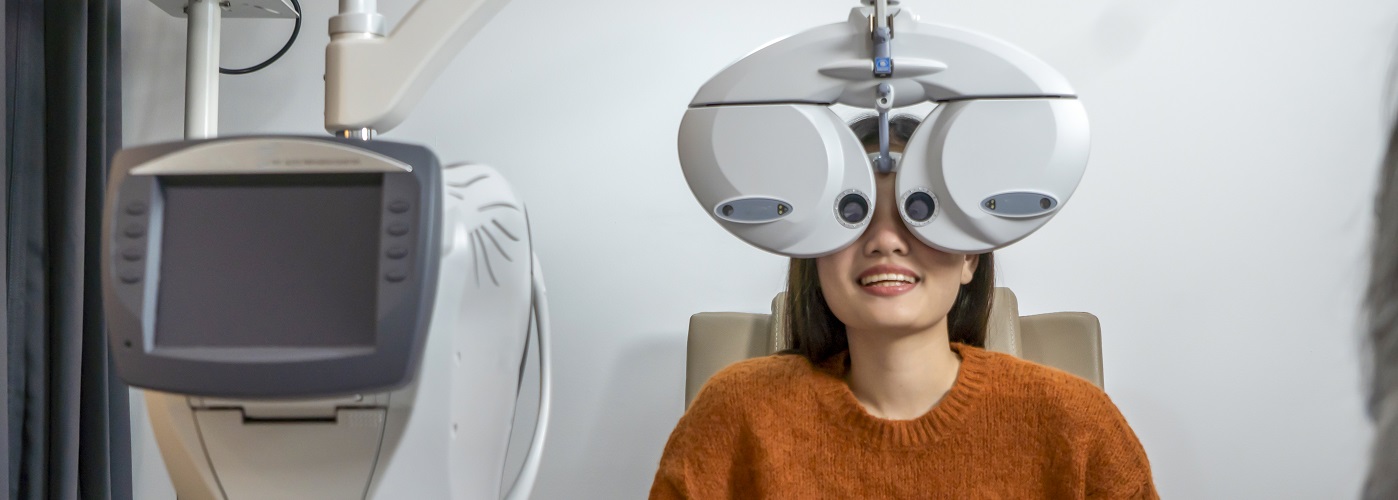
Penyakit mata tiroid atau penyakit Graves ialah keadaan autoimun tiroid yang biasanya menjejaskan tiroid, kulit dan mata.
Apabila kelenjar tiroid menghasilkan hormon tiroid secara berlebihan, keadaan ini dipanggil hipertiroidisme. Ia selalunya menjejaskan mata, menyebabkan bengkak, keradangan dan masalah penglihatan, yang juga dikenali sebagai penyakit mata tiroid atau penyakit Graves.
Oleh kerana ia dianggap penyakit jarang berlaku, kadar sebenar penyakit mata tiroid tidak diketahui. Namun, dianggarkan 16 bagi setiap 100,000 wanita dan 2.9 bagi setiap 100,000 lelaki dalam populasi umum mengalami keadaan ini.
Penyakit mata tiroid (TED) atau penyakit Graves ialah gangguan autoimun. Akibatnya, otot mata, kelenjar air mata dan tisu berlemak di belakang mata menjadi radang.
Ini boleh menyebabkan mata dan kelopak mata menjadi merah, bengkak atau kelihatan tersembul.
Ada juga kes di mana bengkak dan kekakuan otot mata menyebabkan mata tidak bergerak seiring, lalu menyebabkan penglihatan berganda.
Punca sebenar TED tidak diketahui, namun ia mungkin disebabkan tindak balas imun yang tidak normal yang menyerang tisu sihat di kawasan mata.
Sistem imun menghantar antibodi yang menyerang lemak, otot dan tisu lain di sekitar mata. Ini berlaku kerana badan tersalah anggap tisu di sekitar mata sebagai musuh lalu menyerangnya. Keadaan ini dipanggil penyakit autoimun.
Akibatnya, otot mata boleh menjadi kaku lalu menyebabkan penglihatan berganda atau mata kelihatan tersembul.
Penyakit mata tiroid selalunya dikaitkan dengan hipertiroidisme dan merangkumi kira-kira 90 peratus kes.
Sesiapa sahaja boleh mengalami TED kerana ia ialah penyakit autoimun. Namun, terdapat beberapa faktor yang boleh meningkatkan risikonya:
Simptom boleh bermula seawal 6 bulan.
Antara simptom biasa TED termasuk:
Tanda awal TED termasuk mata gatal, berair atau kering serta rasa seperti ada pasir dalam mata.
Pesakit juga mungkin perasan bengkak di sekitar kelopak atau bahagian hadapan mata.
Apabila simptom bertambah teruk, ramai pesakit bimbang mereka mungkin menjadi buta. Penyakit mata tiroid boleh menyebabkan glaukoma sekunder yang akhirnya mengakibatkan buta.
Akan tetapi, mendapatkan rawatan segera apabila simptom muncul dapat mencegah kerosakan kekal pada mata.
Bagi mereka yang sudah didiagnosis hipertiroidisme, doktor mungkin melakukan pemeriksaan fizikal berkala untuk mencari tanda TED.
Jika disyaki, ujian tambahan berikut akan dijalankan untuk mengesahkan TED:

Terdapat dua peringkat atau fasa TED:
Memandangkan terdapat dua fasa atau peringkat dalam TED, rawatan yang diberikan juga berdasarkan perkara ini.
Fasa pertama atau aktif ialah masa apabila penyakit itu perlu dirawat dan dipantau dengan teliti. Pada peringkat ini, rawatan memberi tumpuan kepada memelihara penglihatan dan integriti kornea serta merawat penglihatan berganda.
Air mata tiruan digunakan sepanjang hari untuk melegakan pesakit daripada mata kering, dan gel atau salap pada waktu malam.
Sekiranya penyakit itu berlanjutan, pesakit mungkin diberi ubat imunosupresif. Ini boleh membantu memperlahankan sistem imun yang menghasilkan antibodi yang tidak normal.
Dalam fasa kedua penyakit ini, pesakit mungkin memerlukan pembedahan untuk membetulkan penglihatan berganda dan mengurangkan penarikan kelopak mata.
Pembedahan juga boleh membantu mengembalikan mata ke kedudukan normal dalam soket.
Langkah-langkah berikut boleh membantu untuk mengelakkan TED daripada menjadi lebih teruk:
Penyakit mata tiroid bukan sahaja menjejaskan kesihatan fizikal pesakit tetapi juga boleh menjejaskan keadaan emosi dan kesejahteraan sosial mereka. Oleh itu, adalah penting bagi mereka yang berisiko untuk mendapatkan pemeriksaan biasa dengan memeriksa tahap tiroid mereka secara berkala.
Ketahui tentang pelbagai pilihan rawatan dan perkhidmatan oftalmologi disediakan di Hospital Pantai, Malaysia.
Hospital Pantai telah diakreditasi oleh Persatuan Kualiti Kesihatan Malaysia (MSQH) atas komitmennya terhadap keselamatan pesakit dan kualiti perkhidmatan.
Thyroid eye disease, Available at: https://www.yourhormones.info/endocrine-conditions/thyroid-eye-disease/ [Assessed on: 15 March 2022]
What is thyroid eye disease, Available at: https://www.webmd.com/eye-health/graves-eye-defined [Assessed on: 15 March 2022]
Thyroid eye disease, Available at: https://patient.info/hormones/overactive-thyroid-gland-hyperthyroidism/thyroid-eye-disease [Assessed on: 16 March 2022]
Thyroid eye disease (TED), Available at: https://www.btf-thyroid.org/thyroid-eye-disease-leaflet [Assessed on: 17 March 2022]
Grave’s disease, Available at: https://www.mayoclinic.org/diseases-conditions/graves-disease/symptoms-causes/syc-20356240 [Assessed on: 17 March 2022]
Thyroid eye disease, Available at: https://patient.info/hormones/overactive-thyroid-gland-hyperthyroidism/thyroid-eye-disease [Assessed on: 17 March 2022]

